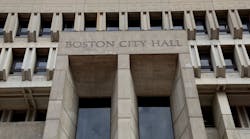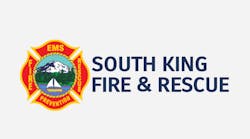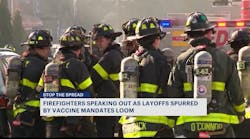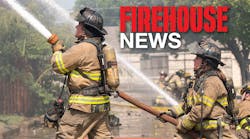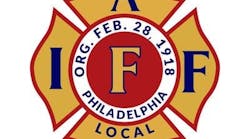Much has happened since the first case of COVID-19 was reported in the United States on Jan. 20, 2020. That date marked the beginning of an ongoing change in our daily behaviors and caused the death of more than 950,000 people nationwide. Although first responders initiated strict protocols, immunity never could be expected.
According to the NFPA, in 2020, firefighter deaths doubled compared with deaths in 2019, with more than half of 2020’s fatalities attributed to COVID. A search of the U.S. Fire Administration database reveals that another 48 firefighters succumbed to the disease in 2021 as of press time. Put another way, dozens of first responders who survived 9/11 failed to survive the coronavirus.
Of course, in a service that’s predicated on public contact, contracting a communicable disease is sadly—and quite obviously—a potential risk. For one group of members of the team—dispatchers—this source of exposure is reduced—and often nonexistent. Still, this group has suffered struggles of its own during the pandemic. Dispatchers aren’t shielded from the damage that’s caused by COVID. In fact, their isolation might contribute to their dilemma.
Transformed landscape
Rather than entering the homes of those who are in need, dispatchers often are sequestered elbow-to-elbow in windowless rooms that are occupied 24/7. Many work prolonged shifts to compensate for continuing staffing shortages. The pandemic served to further thin dwindling ranks and came at a time when many agencies already struggled to maintain minimal workforces.
The public sees the very visible lack of workers at restaurants when they find their favorite lunch spot closed but remains clueless to similar situations at 9-1-1—until they call and the phone seemingly rings forever.
NFPA 1221: Standard for the Installation, Maintenance, and Use of Emergency Services Communications Systems requires that 90 percent of all emergency calls be answered within 15 seconds. In Denver in September 2021, the average 9-1-1 caller was placed on hold for 23 seconds; more than 1,000 callers were placed on hold for at least two minutes. At that time, the city was down 35 percent of its calltakers. Many of those dispatchers who resigned did so because of the increased demands of the pandemic.
In Durham, NC, the vacancy rate was 47 percent in the same time frame. Temporarily, thousands of calls rolled over to Raleigh, which had to process the calls and send them back to Durham for dispatch.
For the fire service, these double delays can be critical. Firehouse Magazine reported on concerns that were raised by the Professional Fire Fighters of Durham Local 668 in May 2021.
During June 2021, almost one-quarter of 9-1-1 calls in Fort Worth, TX, were abandoned, meaning that, despite receiving an automated message after 15 seconds to stay on the line, callers hung up. This further stressed staff, as callbacks had to be made to ensure that no real emergency existed. As with the cities previously mentioned, Fort Worth also was short-staffed.
The communities that are named above aren’t faulted here for their workforce deficiencies. Hundreds, if not thousands, of other communication centers share their pain.
Jason E. Kern, who is the president of the Association of Public-Safety Communications Officials (APCO International), told Firehouse Magazine, “The last 24 months of pandemic and world changes have most certainly transformed the landscape of recruitment, hiring, training and retention in public-safety communications. Now more than ever, directors and agency heads need to adapt processes to continue to properly staff emergency communications centers in order to serve their agencies and communities.”
Dispatcher deaths
The direct effect of COVID is the loss of life or illness within the dispatch center. A Google search reveals a broad scope of telecommunicators who were afflicted with the disease. Fatalities were recorded in Augusta, GA; Broken Arrow, OK; Chicago; Chipley, Broward County and Rockledge (all in Florida); Dothan, AL; Foster, RI; Jersey City, NJ; New Orleans; and Randolph County, NC, among many. The list of agencies that have one or more dispatcher infected by the coronavirus is even broader, including Haines, AK, where all three communications personnel were infected but elected to remain on the job. All reportedly felt well enough to work and were isolated from citizens and other city personnel.
Unfortunately, working when not feeling 100 percent can result in a tragic outcome. Pamela Cooper, who was a 21-year veteran of Phoenix 9-1-1, died after working long hours. Cooper was out sick for more than a month with COVID. Upon her return to work, she was assigned an extended shift. When she reported feeling ill, she allegedly was told that she had to stay. The next morning, Cooper was rushed by ambulance from her home to the hospital. She was placed on life support and ultimately died. A lawsuit was filed by her family.
At the time of Cooper’s death, Phoenix had 56 dispatcher vacancies—approximately one sixth of its authorized staff.
The situation elsewhere often has been worse. According to April Heinze, who is the operations director for the National Emergency Number Association (NENA), staffing at 9-1-1 centers nationwide is down about 30 percent, with some larger urban centers reaching the 50 percent mark.
Still, there are other less visible effects of the coronavirus on dispatch. According to a NENA survey, “Initial Impacts of COVID-19 on 9-1-1 Centers,” roughly half of 9-1-1 centers that responded reported that “their nonessential maintenance programs or upgrade schedules are affected by the pandemic. Of the approximately half of respondents reporting that they were suspending nonessential technology maintenance activities, by far the most common suspended activity reported was vendor upgrades and maintenance. While it is reasonable for [public-safety answering points, or PSAPs] to restrict any and all nonessential activities at this time, especially any engagement with their vendors, NENA warns that foregoing installation of vendor upgrades could expose PSAPs to vulnerabilities if the upgrades include security enhancements.”
Agencies have been forced to deal with the new reality on several fronts. Enforcing vaccine mandates and how and whether to share positive test results are just the tip of the iceberg. Operational changes, including console cleaning, mask-wearing, along with new call-taking and dispatching routines, that reflect COVID concerns also have been added to the workload. Unfortunately, the workload is literally working some dispatchers to death. According to the National Fallen Firefighters Foundation (NFFF), the loss of 22 telecommunicators can be attributed to COVID-19. Ron Siarnicki, who is the executive director of NFFF, told Firehouse Magazine, “It saddens me greatly to see so many public safety officers succumb to the pandemic and the impact that it will have on their families and our industry. These individuals have dedicated their lives to the service of others and unfortunately will no longer be a part of our nation’s public safety team. May they rest in peace.”


